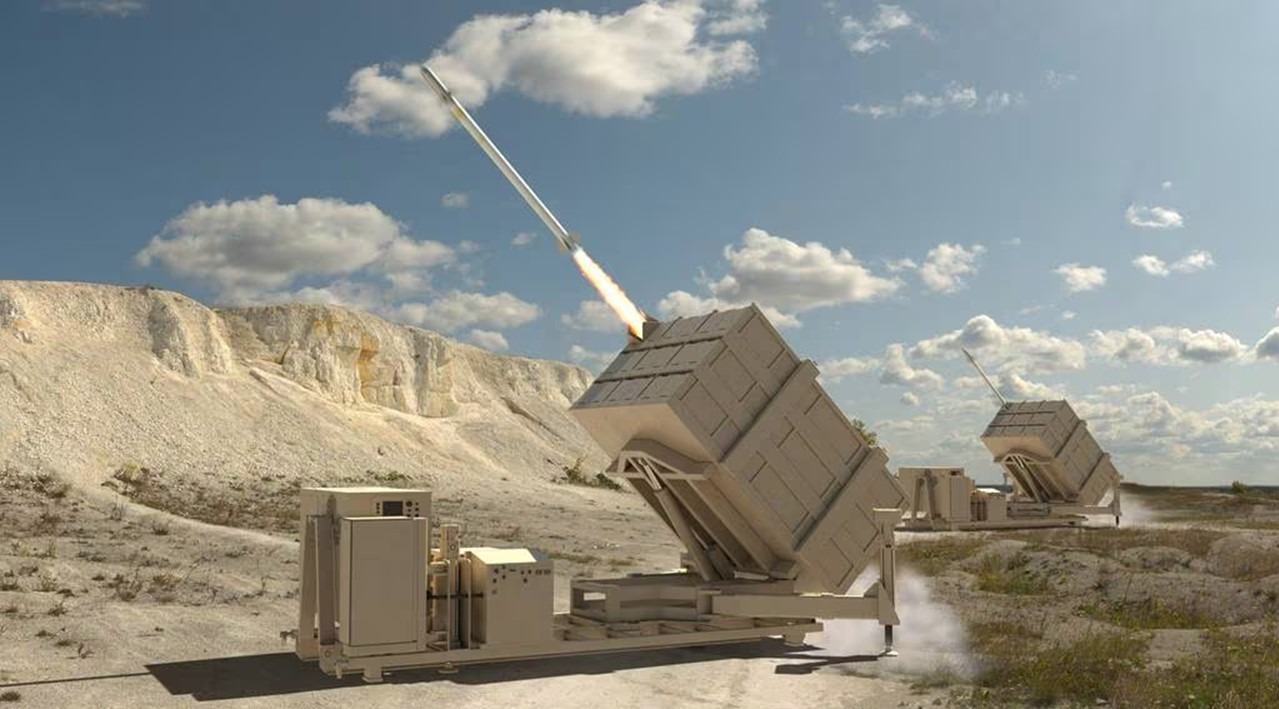El US Army ha contratado a LOCKHEED MARTIN para el desarrollo de un segundo tipo de misil interceptor, que complementará las capacidades de su Sistema de Def Ae & Mis “Integrated Fires Protection Capability” (IFPC). El IFPC también conocido como “Enduring Shield” está concebido para su empleo como parte del sistema de Def Ae cercana y opera el reconocido misil AIM – 9X “Sidewinder”, para destruir blancos pequeños hasta 16km. El nuevo misil deberá ser capaz de neutralizar la amenaza de misiles de crucero supersónicos de vuelo a baja altura y drones de gran poder destructivo.
The US Army has contracted Lockheed Martin to develop a second interceptor for its Integrated Fires Protection Capability (IFPC) system to strengthen its air and missile defense capabilities.
Also known as the Enduring Shield system, the IFPC currently employs AIM-9X Sidewinder missiles, which can engage targets at ranges of up to 10 miles (16 kilometers).
The new IFPC 2nd Interceptor program seeks to develop a more advanced missile capable of defeating lower-flying, supersonic cruise missile threats.
The service is reportedly seeking an AIM-120D AMRAAM-like capability in a smaller airframe to fit inside an IFPC Inc 2 launcher that holds 18 interceptors.
Lockheed Martin will lead the design, production, and delivery of the interceptor, drawing on its extensive experience in integrated air and missile defense, command and control, and advanced technologies.
“We are honored to have been selected by the US Army for this critical program,” vice president at Lockheed Martin Missiles and Fire Control Advanced Programs Randy Crites said.
“The IFPC 2nd Interceptor agreement demonstrates the Army’s confidence in our ability to deliver innovative, effective and sustainable solutions that meet their evolving needs.
This is representative of our industry leadership in [integrated air and missile defense] capabilities that work for any objective. We look forward to continuing our long-standing partnership with the Army and supporting their mission to protect our nation and its interests.”
The development phase is projected to run from 2029 to 2030, followed by low-rate initial production.
Integrated Fires Protection Capability
Conceptualized to bridge the gap between tactical short-range air defense systems and strategic systems such as the Patriot and Terminal High Altitude Area Defense, the ground-based IFPC Increment 1 focused on countering rockets, artillery, and mortar threats.
Increment 2 expands the system’s mission to include defense against cruise missiles and unmanned aerial systems.
A platoon of IFPC comprises four Enduring Shield launchers developed by Dynetics, networked with at least one AN/MPQ-64 Sentinel-series radar through the Integrated Battle Command System for integrated command and control.
The network would also help integrate Enduring Shield with Patriot and other air defense assets, including the Lower Tier Air and Missile Defense Sensor radar, to provide a comprehensive, multi-tiered defense.
The mobile IFPC is intended to protect high-value fixed or semi-fixed military sites from a wide spectrum of aerial threats.
Fuente: https://thedefensepost.com


